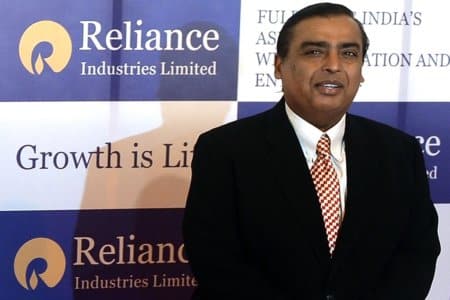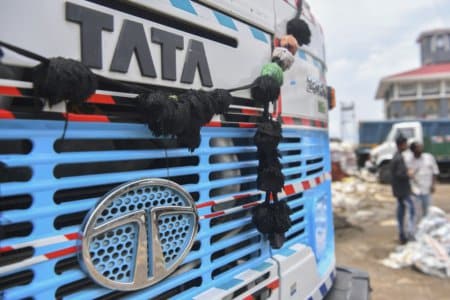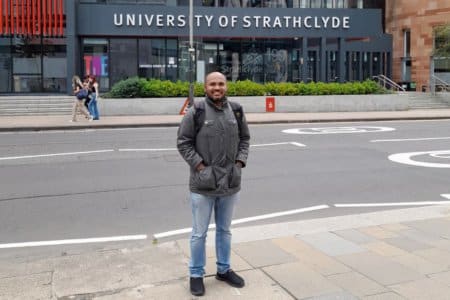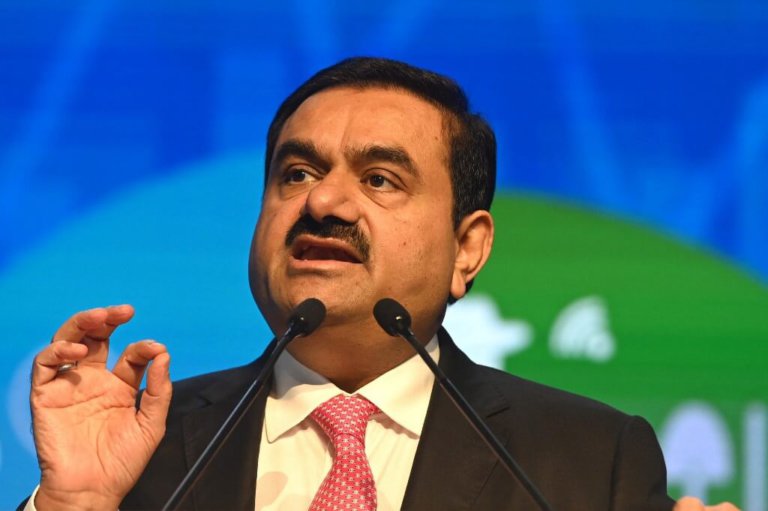
Gautam Adani was not someone marked or born to become one of the richest men who ever lived.
He wasn’t one of those babies that had gurus or swamis foretelling his birth and how he would one day help India come out of poverty — while amassing hundreds of billions of dollars.
Gautam was just one of eight children in a Jain family led by a small textile businessman — like hundreds of millions of others.
Life wasn’t easy but this man rose above his circumstances and made a name for himself — to the point he self-proclaimed himself to be the Rockefeller of India.
It’s a big claim and one backed up by his big fortunes.
Today, Gautam is worth US$50.2 billion (it used to be US$120 billion before a scandal to be explained below).
He’s not only a successful businessman, but his group of companies, Adani Group, is involved in almost every industry imaginable.
How did a dropout — and one from high school nonetheless — achieve this in a country where its top 10% only make US$300 per month?
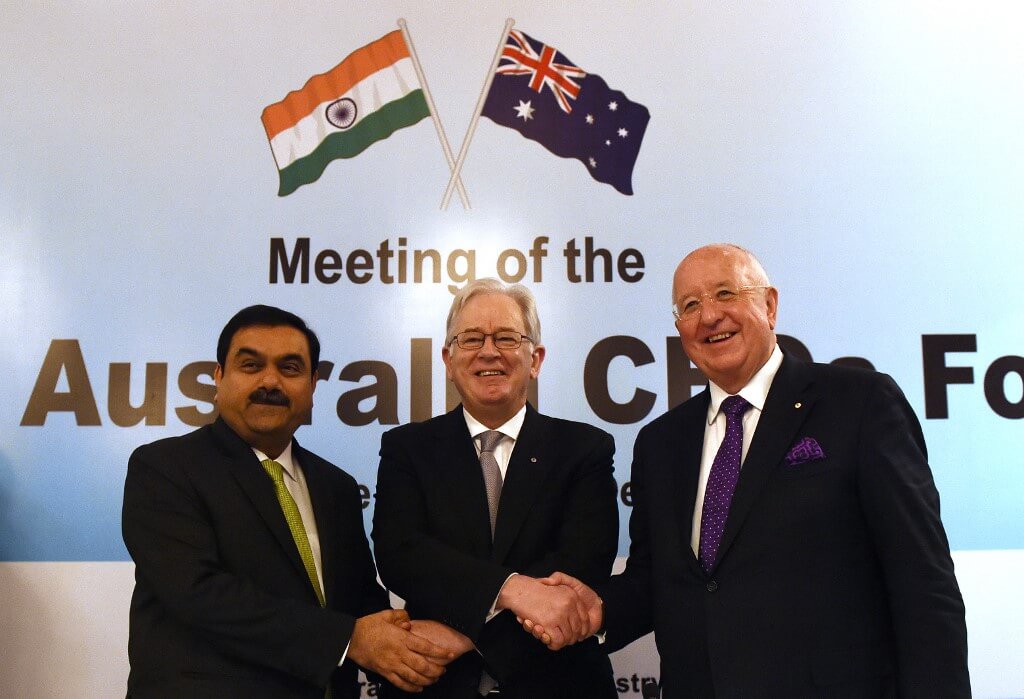
Gautam Adani was the mastermind behind the rapid expansion of the Adani Group. Source: Money Sharma/AFP
The education of young Gautam Adani
Gautam was born to a Gujarati Jain family in Ahmedabad, Gujarat, in 1962.
The state capital at this point had under half a million people and an economy venturing into heavy and chemical industries.
His parents, Shantilal Adani and Shanti Adani, had eight children, including Gautam; he was the fourth of five sons.
They were Jains, a religion that mandates extreme pacifism (i.e. that war and violence are unjustifiable) but more known to oppose the eating of eggs and plants that cannot be uprooted without killing the entire plant, such as onions, garlic and potatoes.
Shantilal was the breadwinner of the family and provided for them through a small textile shop he owned and operated.
Even though they weren’t wealthy, Shantilal ensured all his children were educated and sent them to school.
As a child, Gautam had a regular school life and went to the Sheth Chimanlal Nagindas Vidyalaya School in Ahmedabad.
Not much is known beyond this, save for this tweet that hints he had to “row through sands”:
Your roots always keep calling you back. So many memories. It’s sheer joy to be back home in Banaskantha talking to the students of Palanpur Vidyamandir on the school’s 75th anniversary. It is only those that row on the sands that are best prepared to reach the oceans! pic.twitter.com/Eowrlh8CLI
— Gautam Adani (@gautam_adani) January 8, 2023
In another post, he tweeted: “The lamp of knowledge of Palanpur Vidyamandir has burned bright for 75 years. Students, your turn to ensure it burns even brighter. Make the matrubhumi (homeland) proud.”
Gautam then went on to Gujarat University to pursue a Bachelor of Commerce.
It is said that while he was studying, he one day visited Gujarat’s Kandla Port, and his dream was ignited to build something of that magnitude.
For unknown reasons, he dropped out of university halfway through the course at the age of 16 and hopped on a train to Mumbai with almost no money in his pocket.
He wanted something different and he wanted to do it on his own, he says.
“A question I often get asked is, why did I move to Mumbai and not work with my family? The optimism and desire for independence of a teenage boy are hard to contain.”
This was in 1978, and Gautam was fortunate that his elder brother Vinod was living in Mumbai.
He moved in with him and took on the role of sorting diamonds at Mahendra Brothers Exports Private Limited.
Three years later, he got his first taste of success when he earned a commission of US$122.31 from a Japanese trader with his diamond business.
It was a small sum but enough for India and enough for Gautam to start his own brokerage in diamond trading at Zaveri Bazar.
By a combination of street smarts and politicking — and “pure dumb luck” — he would soon see a bigger boom in his fortunes.
Gautam, then a nobody, would soon be a somebody.
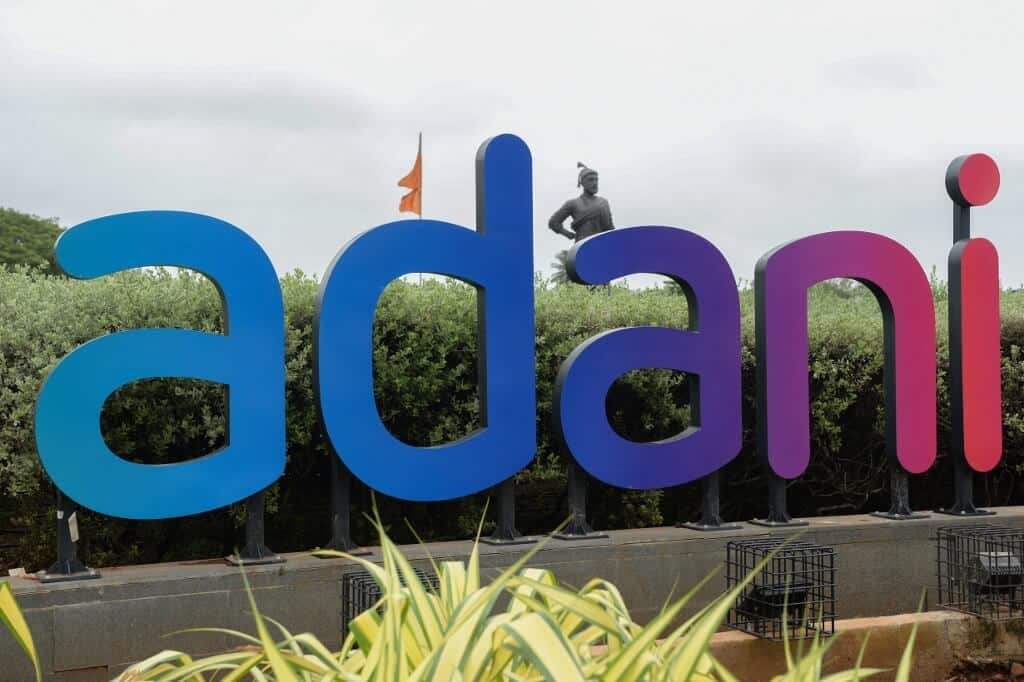
Today the Adani Group brand can be seen everywhere in India. Source: Indranil Mukherjee/AFP
Who is Gautam Adani, the diamond sorter turned .. builder of ports?
His next breakthrough came when his eldest brother Mansukhbhai Adani bought a plastics unit and asked Gautam to join him as an operation manager.
He considered this his ultimate gateway to the global trade arena.
The company was primarily involved in importing polyvinyl chloride, or more known as PVC, but Gautam had bigger dreams.
In 1985, he started importing primary polymers at a small scale first, all the while sharpening his skills and making new ground.
Then came the big guns; in 1985, Gautam established a commodity import and export firm called Adani Exports, today known as Adani Enterprises Ltd.
Agriculture and power-related commodities were what Gautam initially wanted to focus on, but India’s economy had taken a turn for the worse.
India experienced a macroeconomic crisis in 1991, so the government introduced policies that enabled bigger foreign investment, lower import tariffs, and privatisation of companies.
This turned out to be the silver lining Gautam was looking for. He began expanding into metal textiles and agricultural products.
Before long, Gautam was winning the contract to manage the port of Mundra in 1993, thanks to clever manoeuvring of India’s infamous bureaucracy.
Opened in 2001, the Mundra port is now the largest in India.
Adani Enterprises built the first jetty on this port, and Gautam successfully led the company to become the largest private multi-port operator in India.
Gautam then went on to add coal mines, power plants and airports to his portfolio.
In 1996, Adani Power Limited was formed. It became the largest private thermal plant in India with a capacity of 4,620 megawatts.
Then, in a very smart move, Gautam shifted from power distribution to power generation by acquiring the Carmichael coal mine in Queensland in 2010.
He also purchased Australia’s Abbot Point coal terminal for US$2 billion in June 2011.
Not satisfied with his business ventures yet, Gautam expanded into a variety of industries including defence, agricultural logistics, green energy, education, hospitals, property, and more.
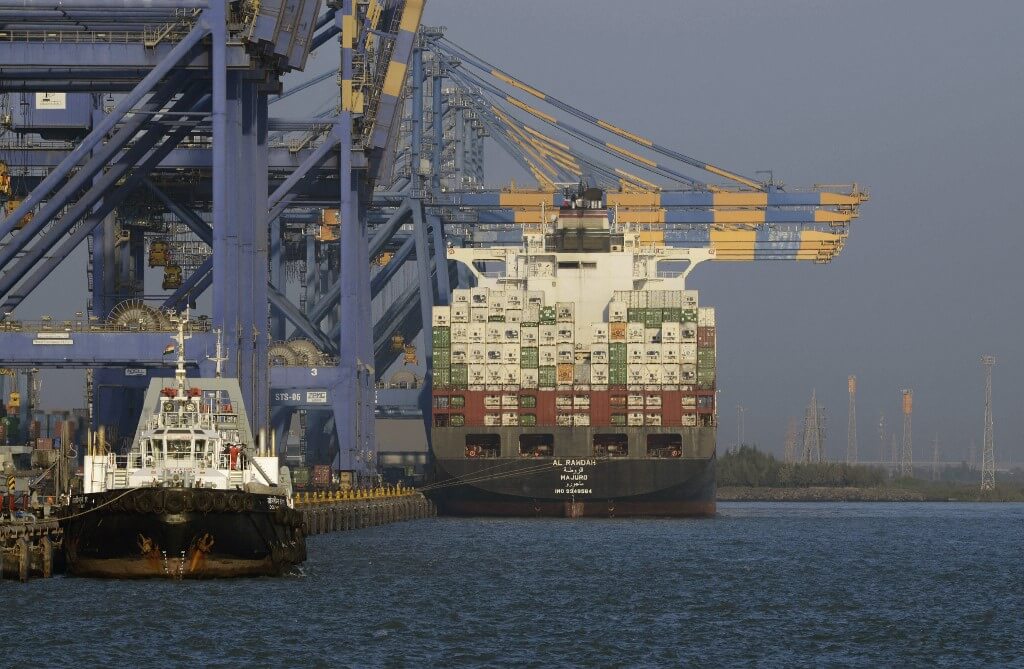
Adani Ports and SEZ Ltd is India’s largest integrated ports and logistics company. Source: Sam Panthaky/AFP
Succession, the Gautam Adani version
Gautam is notorious for being a private person.
In fact, it is largely believed that his marriage was arranged by elders from both sides of the family.
Priti Adani was born and raised in India. She graduated with a Bachelor in Dental Surgery (BDS) from the Government Dental College and Hospital, Ahmedabad.
Before she could embark on her career, she got married and then was appointed as the chairperson of the Adani Foundation.
She and Gautam soon had two children, Karan Adani and Jeet Adani.
The 36-year-old has his life planned out for him already. From the time he was born in 1987, he was groomed to take over the family business one day.
He graduated from Purdue University with a Bachelor of Science in Economics before joining Adani Ports & SEZ Limited (APSEZ).
Karan learned many things through his education, one of them being overcoming challenges and putting in the hard work as an entrepreneur.
“From that love will come the dedication that gets us out of bed at 4 a.m. because of a great idea we thought of,” he says.
Perhaps the biggest advice he gained came from someone much closer to home: his own father.
Gautam said that if “one can’t think at scale, they cannot influence anything”. Karan said thinking at scale allowed him to become a leader as opposed to becoming “someone’s follower”.
In 2016, he became CEO of the group’s ports arm and in 2019, he was named head of Adani Group’s Airports, which manages seven airports across India.
These are Sardar Vallabhbhai Patel International Airport, Mangalore International Airport, Jaipur International Airport, Lokpriya Gopinath Bordoloi International Airport, Trivandrum International Airport, and Chaudhary Charan Singh International Airport.
Karan was also tasked by his father to continue building the Adani Group’s identity around an integrated business model, something he would have mastered during his years at Purdue.
Then, India’s wedding of the century.
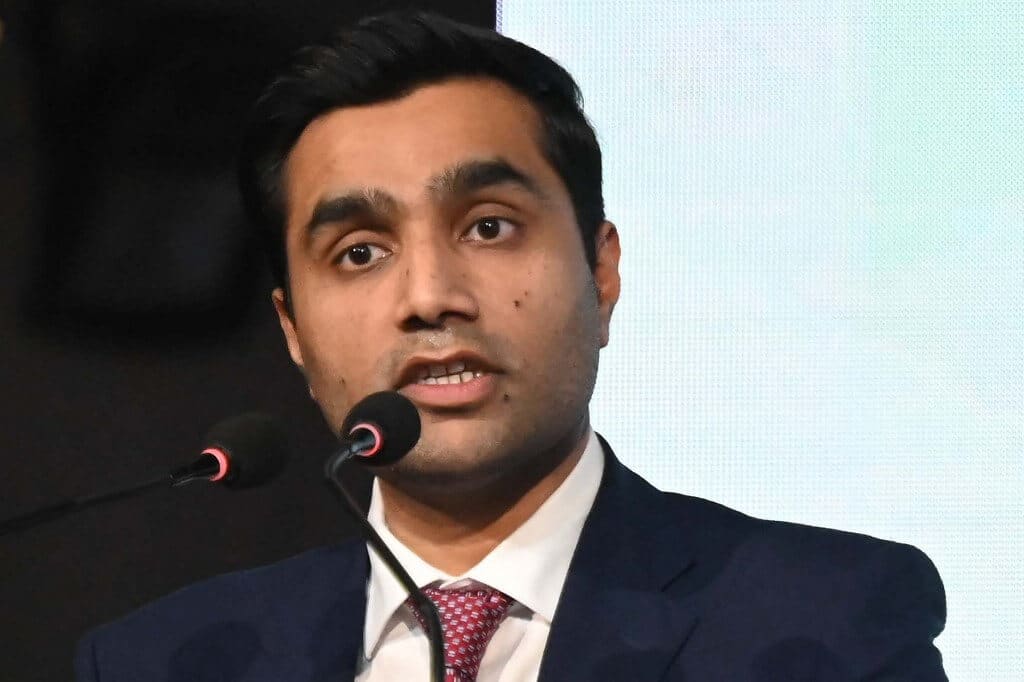
Karan Adani is the eldest son of Gautam Adani and will one day helm the company with younger brother Jeet. Source: Noah Seelam/AFP
Paridhi Shroff, the latest addition to the Adani empire
In 2013, Karan married Paridhi Shroff, the daughter of famous Indian corporate lawyer Cyril Shroff.
Though petite in stature, she made up for it intellectually.
She completed her final high school years at the H. R. College of Commerce and Economics before going on to the University of Mumbai, graduating with a B.Com. (Accounting and Finance)
Then taking after her father, Paridhi enrolled in the Government Law College, Mumbai, where she pursued a Bachelor of Law.
Paridhi has also attended Institut Villa Pierrefeu, a traditional finishing school in Montreux, Switzerland and INSEAD, the world’s #1 business school in France.
Today, Paridhi plays an important role in the Cyril Amarchand Mangaldas’ General Corporate Practice Group and advises clients on compliance matters, joint ventures and more in the infrastructure space.
Karan calls her his “partner in crime.”
To my best friend, partner in crime, wifey and the coolest mother @Paridhi_adani!! Wish you a very happy birthday and an amazing year ahead. ❤️🎂 pic.twitter.com/JSVcXajRxc
— Karan Adani (@AdaniKaran) June 12, 2020
Jeet Adani, Gautam Adani’s youngest son
Jeet Adani is 10 years younger than Karan.
He graduated from the University of Pennsylvania with a bachelor of engineering and applied sciences.
To further enhance his skills and knowledge, Jeet attended the Owner/President Management programme at Harvard Business School.
The programme is known to be a game-changer for those wanting to build, lead and grow successful businesses.
He joined the family company in 2019 and began his career in the Group CFO’s office, responsible for strategic finance, capital markets, and risk and governance policy.
He recently got engaged to Diva Jaimin Shah, whose family is in the business of diamond trading.
Gautam Adani regrets dropping out of college
You’d think that by having all that money, there was nothing for Gautam to regret.
However, not completing his college education was something he felt quite strongly about.
His early experiences made him wise, but he missed out on the formal education that would have definitely broadened his knowledge, he says.
“Reflecting on my life and the different turns it took, I now do believe that I would have benefitted if I had finished college,” he says.
Gautam believes to acquire wisdom, one must experience, but to acquire knowledge, one must study.
“And although I will never really know, I do reflect at times that the expansion in my abilities may have been faster had I gone to college.”
Some saw it as a good omen; his former senior vice president of corporate communication once said his ability to follow his instincts gave him a good start to life.
“It is the lack of formal education that allows him to think out of the box and make swift decisions.”
On his fortune and his setbacks in the industry, Gautam says the best part of starting a legacy was he had nothing to lose.
This was liberating to him, he says, for he had no one and nothing to follow but rather, the world was his oyster because he could create what he wanted to, he says.
“I had nothing to risk by jumping into uncharted waters. I had no expectations to fulfil except those of my own. These beliefs became a part of me.”
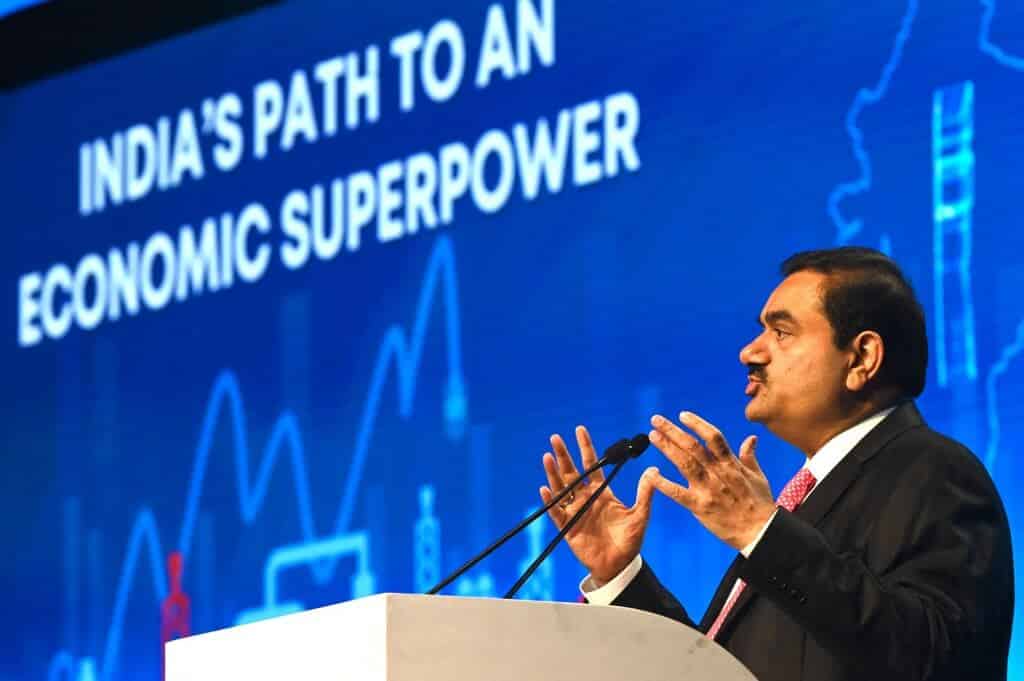
Gautam Adani is known for giving away millions in charity and aims to help the people of India. Source: Indranil Mukherjee/AFP
Gautam Adani, the philanthropist
Gautam today is India’s richest man and the fourth wealthiest worldwide after LVMH’s Bernard Arnault, Elon Musk, and Jeff Bezos.
But the one thing he hasn’t forgotten is his roots and how his family, like Mukesh Ambani’s, struggled when they were younger.
Gautam is known to be one of India’s most charitable billionaires.
For his 60th birthday, Gautam pledged US$7.7 billion to programmes related to healthcare, education, and skill development, according to Forbes Asia’s 2022 Heroes of Philanthropy.
He works in tandem with his wife, Priti, who runs the Adani Foundation.
She has been credited with being the driving force behind the good works and is said to be a respected businesswoman and educator in India.
In 2001, when an earthquake hit Gujarat, leaving thousands dead and injured, children lost their parents and stopped going to school.








